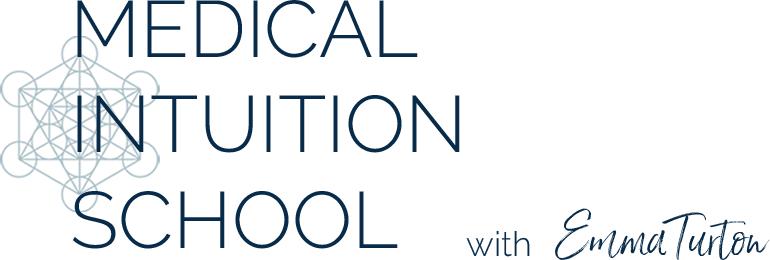Unraveling the Metaphysical Mysteries of Scoliosis: Can Height Alone Predict Its Risks?
Scoliosis, a lateral curvature of the spine, has long been a medical enigma, especially when considering how it affects individuals differently despite similar physical attributes. One such debated factor is the correlation — or lack thereof — with height. But underpinning this medical phenomenon is a web of metaphysical theories that goes beyond the mere protrusion of the body into the realm of the unseen, unknown, and controversial.
Understanding the relationship between scoliosis and height is a complex yet potentially groundbreaking pursuit. For medical professionals, researchers, and the layperson alike, exploring the metaphysical layers may offer insights that conventional wisdom has thus far overlooked. It comes down to a paradox — why would one tall person remain unscathed by scoliosis, yet another, of equivalent height, succumb to this spinal anomaly? This blog post dives into the metaphysical waters, balancing on the line between science and spirituality, to examine the possibility of height being a concealed indicator of scoliosis risk, not through genetics or physical stress alone but through deeper, unseen forces.
The Conventional View of Scoliosis and Height
Traditionally, the understanding has been that scoliosis results from a combination of factors, including genetics, abnormal bone development, neuromuscular conditions, and unknown triggers. Height, often seen as a mere product of genetic predisposition and a potential marker of bone elongation errors, is typically not directly associated with scoliosis by medical professionals. From a straightforward biomechanical perspective, it’s clear that the taller the individual, the greater the potential for stresses and strains on the spine. However, there’s no definitive, linear, or indeed causal link between height and the acquisition of scoliosis.
Challenging the Orthodoxy: Could There Be a Metaphysical Link?
The notion of height being connected to scoliosis risk through a metaphysical lens raises questions about unseen energy patterns and the role of consciousness in bodily manifestation. If we step outside the strictly biomedical framework, various esoteric philosophies assert that our bodies are not just flesh and bone but also repositories of energy, belief, and past experiences. Could it be that certain body types are more susceptible to developing scoliosis due to the energetic imprints they carry, which in turn may be influenced by aspects such as height?
Exploring Metaphysical Theories
Height as a Metaphysical Indicator
Ancient wisdom traditions, such as Ayurveda and Traditional Chinese Medicine, regard human body proportions as a reflection of internal balance or imbalance of life forces. In these systems, height can represent the state of one’s vital energy or chi. When this flow is disrupted, it could influence physical growth and development in such a way as to predispose an individual to a condition like scoliosis.
Past-Life Influence
A more spiritually inclined inquiry might lead us to consider the influence of past lives on present-day health. The karmic view suggests that unresolved energetic issues from previous incarnations could manifest physically in the form of scoliosis. Height, in this context, might be a marker of this past-life energy.
Consciousness and Expression
Emerging fields like consciousness medicine propose that the state of one’s consciousness can influence health at a profound level. If we accept that the spine symbolizes support in life and growth, could it be that certain psychological or emotional factors, particularly those related to one’s literal and metaphorical “backbone,” play a role in the emergence of scoliosis?
The Role of Energetic Healing in Scoliosis Treatment
Energetic healing practices, distinct from conventional medicine, focus on influencing the body’s subtle energies to promote balance and well-being. Therapies such as Reiki, acupuncture, and chakra balancing are believed to help recalibrate the body’s energy centers, potentially addressing underlying energetic imbalances related to scoliosis. When it comes to healing the metaphysical self, these unconventional treatments offer alternatives for those who seek a holistic approach to their well-being.
Where Science and Metaphysics Meet
While these discussions might seem speculative, science itself is no stranger to the concept of unseen forces and fields. Quantum physics, for instance, points to a reality far stranger than the crude determinism of classical mechanics. These perspectives, however, often remain on the fringes of the accepted medical canon, primarily due to the difficulty of empirical verification.
Practical Implications for Patients and Providers
Whether or not height is a true metaphysical predictor of scoliosis risk, the exploration of these topics has practical implications for patient care. An openness to metaphysical considerations encourages a broader approach to diagnosis and treatment, potentially leading to more comprehensive and effective care. Patients, particularly those who feel overlooked or misunderstood in the current medical model, may find comfort and direction in alternative perspectives.
The Way Forward: Balancing Skepticism and Openness
Acknowledging the potential for a relationship between scoliosis and height that extends beyond genetics and physical stress requires an open-minded stance that balances skepticism with curiosity. Research within the realms of metaphysical healing and personal transformation may uncover truths that are currently beyond the scope of the microscope and the MRI machine.
In conclusion, the relationship between height and scoliosis is one that deserves a deeper examination, not just through the lens of conventional medicine but also through the kaleidoscope of metaphysical exploration. By considering these unseen dimensions, we stand to gain new perspectives that could revolutionize the way we diagnose and treat scoliosis and other complex health conditions.
